As an Amazon Associate I earn from qualifying purchases.
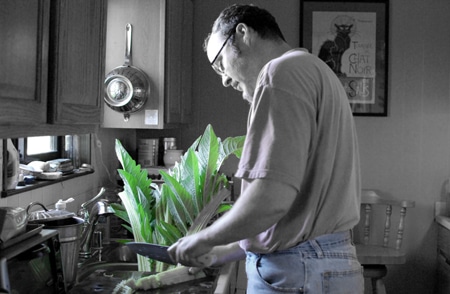
It’s been a week since my cat Paka died. It took me several days to want to be anywhere but bed, and several more to want to cook. I started with a simple tomato sauce, made with butter and tossed with store-bought spaghetti; it’s probably the first thing I learned to make as a teenager.
Every morning before I left for work I went out to the garden to visit Paka’s grave, a little lump of earth next to one of my Graciano grape vines. The garden has always been my sanctuary, but now it feels almost like sacred ground.
Yet my little green world is neither mausoleum nor boneyard. It churns with the vigor of life every bit as much as the rest of the world. I became keenly aware of that churning last week. I felt like my life had stopped, but the birds kept on singing. People all around me went about their business, and twice the sky turned that unfathomable blue it gets on those crystalline spring days when everything is sharper and more crisp.
All week I felt the urge to get on fighting with my grief. Even the two remaining cats, Harlequin and Giblet, seemed like they were telling me to once again be that fun, oafish giant they liked to tease and run away from. Both have reacted to my loss, and Harlequin, normally so cool, slept on my chest one night; she’s never done that before.
Each day I felt a bit better, until finally it was Sunday. I went to see Paka and decided that I would spend the day in the garden. The sky was that blue, it was breezy and cool, and I finally felt strong enough to work for the first time since my Achilles injury felled me in December.
What I returned to was a riot of growth. I’d been out of the garden the entire winter season — here in Northern California we garden all year long, and the cool, wet winters are prime time for green things and roots. Thank heaven we’d had rain recently, so the weeding was easy, if extensive.
After five years, my garden has almost become self-sustaining. I always let some of my favorite plants go to seed, and I always leave some beds fallow. I like flowering veggies, as they attract bees, and bees pollinate everything around them, in this case my fava beans, which are as tall as my chest now.
Letting veggies go to seed also means you will get some volunteers. When I started my garden, it was orderly, well-rotated, and very, very pretty. But life is never like that for long — at least without extraordinary efforts, like wholesale soil changes or plastic surgery — and now my garden is a patchwork of honored plants: A stray salsify here, several random carrots there, a little patch of wild arugula, an already foot-tall cardoon seedling.
Weeding for me mainly means thinning volunteers, for as much as I love California poppies, elecampane, parsley and wild arugula, they are not free to take over my garden. I know it’s strange, but I hum Nick Lowe’s “Cruel to be Kind” every time I do this. This seedling must die that its neighbor may grow strong. It can be harder than you might think — I have seen my fingers involuntarily hesitate before plucking a beautiful, strong little beet or leek seedling that has had the misfortune of growing next to an even stronger little beet or leek seedling. Weeding vegetables is a gentle reminder of life and death, and the randomness of it all.
But as much as I pulled volunteer vegetables yesterday, I pulled even more grass — grass of every variety, from sedge to foxtail to fine, lacy grasses to my nemesis, Bermuda grass. If the weeding of vegetables is a soft lesson in life and death, the weeding of Bermuda grass is a hard lesson in the presence of evil. This is an imported grass that spreads by rhizomes, rhizomes that are both strong and weak – they resist being pulled from even wet ground, yet will break before giving themselves up to the trashbin. Like real evil, Bermuda grass is insidious and grows all around you before you become aware of its presence. And also like real evil, Bermuda grass can never be destroyed, only contained.
With most of the weeds, edible and otherwise, removed, I stood sweating in the sun and looked over my plot. I ran my eyes over each section, creating a mental inventory of what is there and what is demanding my attention right now, or will be in a few days.
My mache is going to seed. So are my lettuces. The escarole and Italian red chicory is exuberant, which in plant terms means it is reaching for the sky in preparation for flowering; time is short for them. Borage, which is the rabbit of the garden world because it is mild-flavored and reproduces so rapidly, is all in flower. I will keep much of it, but some must go. Similarly, wild arugula will live for years, but grows so bitter in warm weather it becomes inedible – time is short for it, too.
So I pulled some borage and some wild arugula and blanched them in salty water. The borage, finely chopped, will become a green pasta; the Italians use borage a lot in pasta, as I’ve discovered reading my new favorite Italian book, the Encyclopedia of Pasta. The arugula will become a pesto – I love the mustardy bite of arugula pesto.
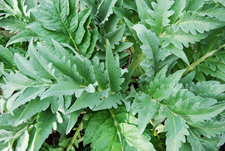
I trimmed and chopped the stalks and simmered them for two hours, hoping they’d be nice and tender. They were, and I buzzed the fibrous chunks in a food processor and then decided to run the mush through my food mill to strain out the fibers. All that came through the food mill was water. Olive drab, slightly bitter water. Yech. Fail. Epic fail. Plan B for the cardoons will be a simple gratin, which is always a hit.
Next up will be my salsify, root chicory, leeks, fennel and an oregano plant that has designs on conquering the rest of the garden; I think I’ll name it Constantine. Or maybe Hadrian.
Busy days ahead. There is much to do before the weather grows warm. Working in the garden, clearing ground next to Paka’s grave so I can plant chickpeas, I realized something: Life is now. No one knows how much time we are given; it could be 40 years, or 40 minutes. My garden is a stark reminder of that, a reminder to suck the marrow from the bones of each day and go to sleep happy and sated. For you may not get another.


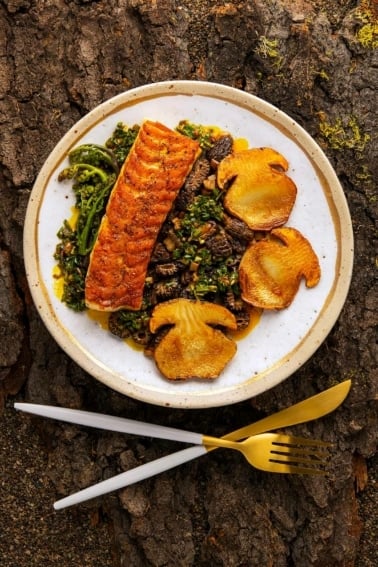
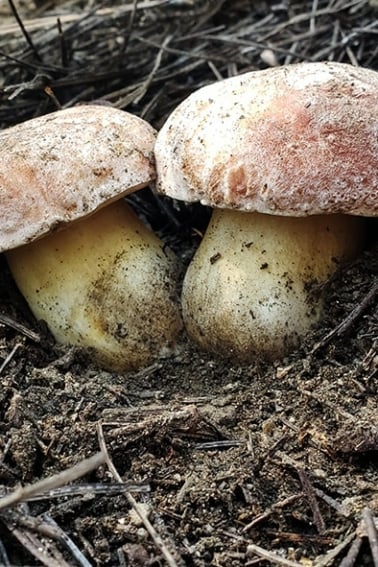
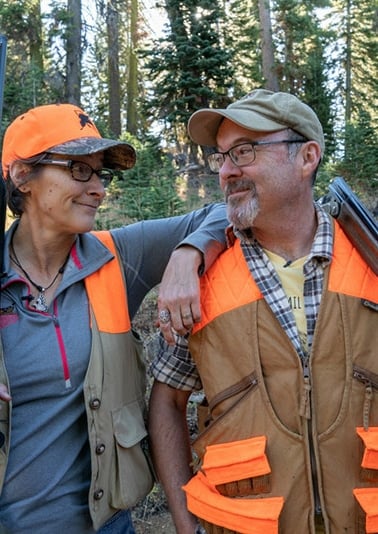
I’ve grown cardoons and have a very old recipe from Mrs. Beeton’s Book of Household Management (1896) It cooks the inner stalks until tender and serves them in a cream sauce. If you’d like that recipe I’d be happy to share it. Sorry about your cat but at least you know what happened. I had a cat disappear and it was brought back to me in a box dead. (killed by the person bringing it I believe but can’t prove it)
Ben: Great tip! Like use the scrubber part on a clean sponge?
tip: to reduce the bitter flavor of the cardoon, scrub the patina off with a coarse sponge. This is amazingly effective.
So sorry to hear about your cat, hope your garden turns out great!
I thought that looked like a cardoon! I’m interested in trying a wild version. Nodding thistle (Carduus natans) grows as a noxious weed here, and I’m curious.
But yes, a garden. So on board with you here.
Gorgeous writing, and such a beautifully evocative photograph, Holly.
Our oregano went into full flower and killed half of its self off last year.
Hank- this was a really lovely post. I think that the garden is the best place for solace from a loss, and pity people who don’t have this outlet.
RE: the conquering oregano- I like Hadrian, but offer Napoleon….unless you think that’s too obvious….
Love the comparisons of good and evil in this very inspirational blog! Happy you are out in your garden where life goes on and needs your attention! It is a comfort to know that Paka is there too.
Please let Holly know that the black and white photo of you in the kitchen with the only color being the greens and your blue jeans is striking! Nice touch and good use of this technique.
Glad you’re back. This post is lovely. Isn’t nature just grand and cruel
in nearly equal measure.
Beautifully written, Hank.
I’m so sorry about Paka. The garden indeed provides solace. And your garden seems to have it in spades. What a gorgeous, bountiful place! I always have a tough time pulling seedlings. I love volunteers. Yes, enjoy the days we have.
As with most monumental changes in life… one step at a time. You will find light in your garden, with your wonderful writing. I always think… what would the departed want. They would want you to be happy as they always did when they were with us.
I know by big guy hated it when I was blue… I’m sure your cat was the same. Carpe Diem!
Hank, this is so moving. I’m so glad you are back to cooking and working in the garden. Working with the earth and simple pleasures of the kitchen connect us and literally ground us when things in life overwhelm. I’m going to remember what you wrote about living in the moment.
Amen, Hank. Beautiful.
Hank, your writing is always beautiful but this piece is especially touching. Zest for life is a wonderful tribute to loved ones who have passed.